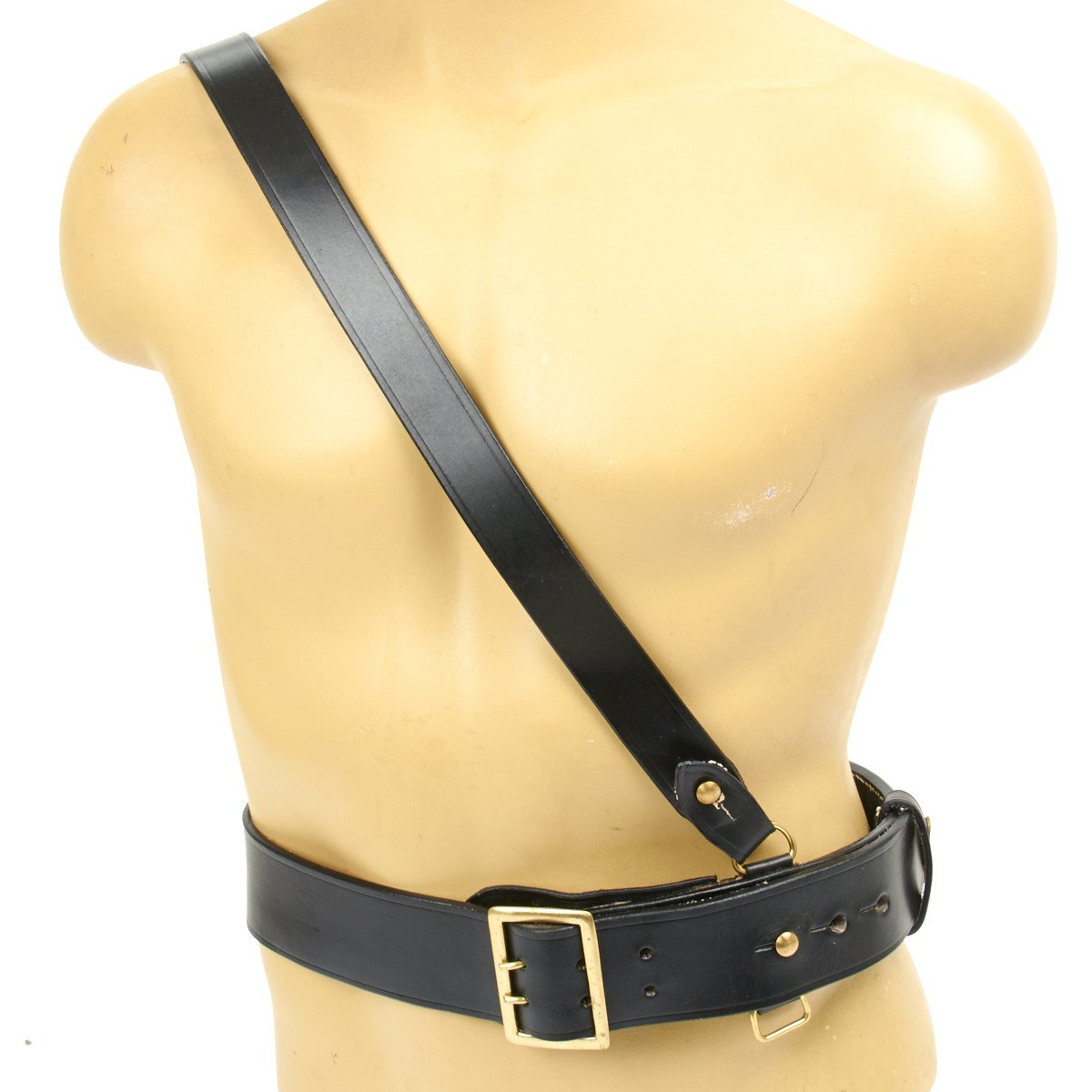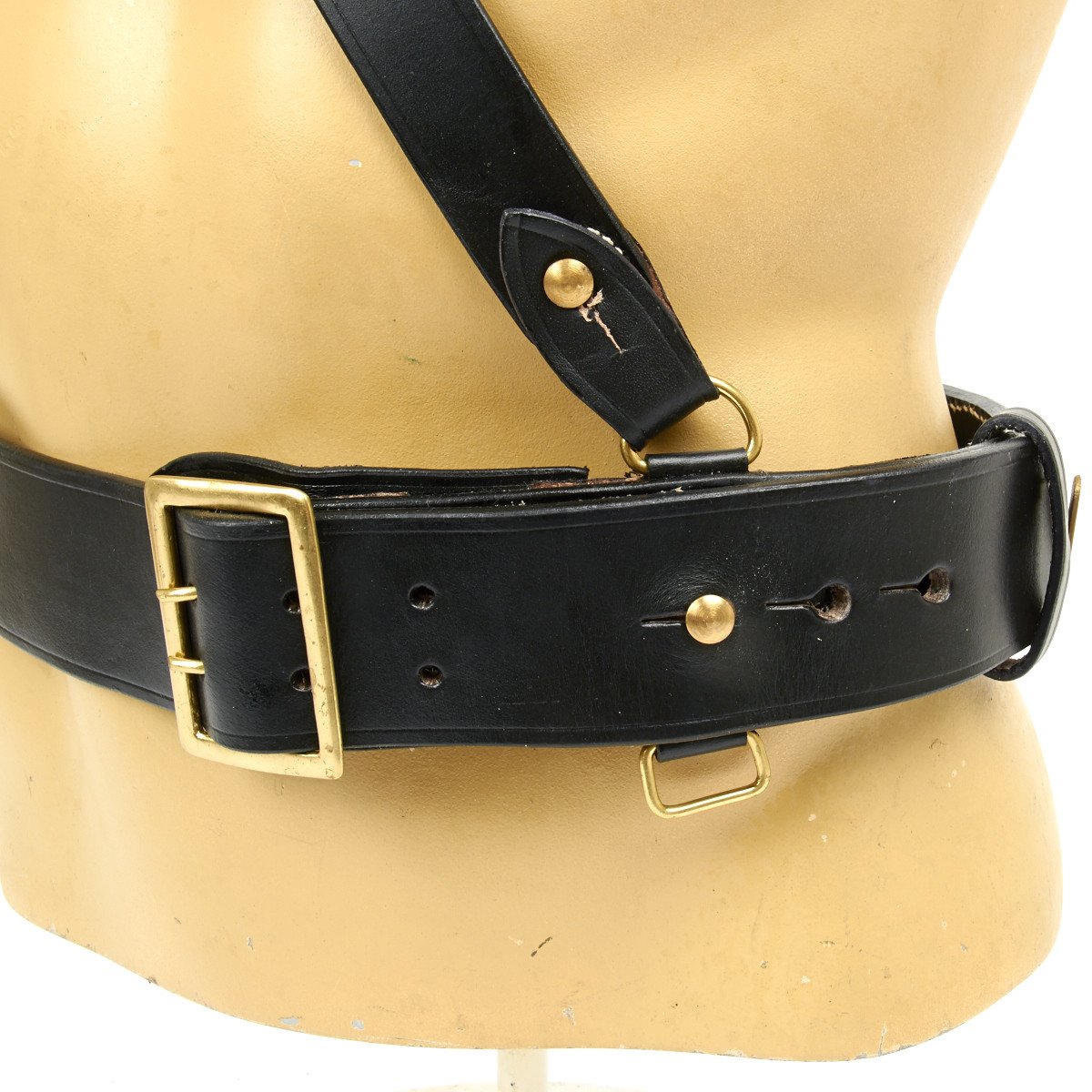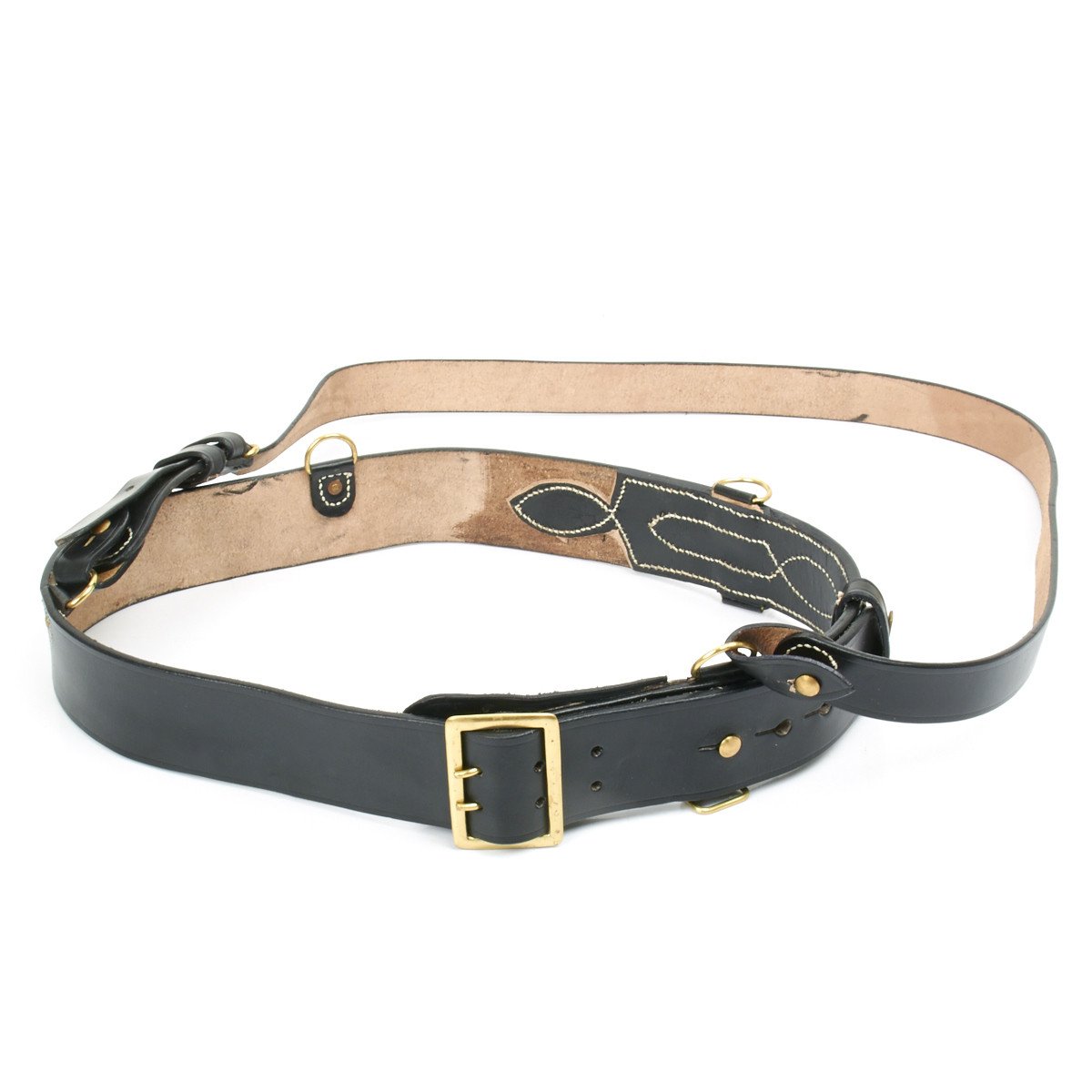British WWI Pattern Sam Browne Belt with Shoulder Cross Strap – Black Leather New Made Items
$ 49,95 $ 29,97
New Made Item: Official British Issue Sam Browne belts were brown, however a variety of commonwealth troops (and other Nations) used them in Black, therefore we now offer the same excellent quality belt and cross strap in rich black leather with all brass hardware.
These are identical to those issued since the turn-of-the-century and through both world wars. Complete with double prong brass buckle, brass sword fitting mounts and over the shoulder cross strap. Ready for use with any British brown leather .455 cal. or .38 revolver holster.
This belt set is not a cheaply made knock-off so often encountered. Examine the quality of the workmanship, the quality of the brass fixtures, and the texture of the leather that make this reproductions stand out above all the rest.
Belt Adjustable to approx sizes: 48-52. For smaller sizes, additional holes may need to be made in the leather. Belt width is 2 inches, and thickness is approximately 3/16 inch.
History of the Sam Browne Belt-
Sam Browne was a British army officer serving in India in the 19th century. In those days officers always carried a sword into battle. It hung from a little metal clip on the waist belt, called a ‘frog’. However, the scabbard tended to slide around a lot when they charged the enemy, meaning that it had to be steadied with the left hand before being drawn.
During the Indian Rebellion of 1857 in India, Captain Sam Browne was serving with the 2nd Punjab Irregular Cavalry. On 31 August 1858, Captain Browne was involved in the fighting near Seerporah. As he charged a cannon being reloaded, he was attacked by one of its crew. Browne received two sword cuts, one on the left knee and one which severed his left arm at the shoulder. He survived the injuries but without a left hand, he found that he was now unable to control or draw his sword.
Browne came up with the idea of wearing a second belt which went over his right shoulder and held the scabbard in just the spot he wanted. This would hook into a heavy leather belt with “D-rings” for attaching accessories. It also securely carried a pistol in a flap-holster on his right hip and included a binocular case with a neck-strap. Other cavalry officers in the Indian Army began wearing a similar rig and soon it became part of the standard uniform. During the Boer War, the rig was copied by Imperial and Commonwealth troops and eventually became standard issue.
Infantry officers wore a variant that used two suspender-like straps instead of the cross-belt. It was supposedly invented in 1878 by Lieutenant Sir Basil Templer Graham-Montgomery, 5th Baronet Stanhope of the 60th Rifles while serving in India. There has been a great deal of discussion as to whether Browne modified Graham-Montgomery’s design or vice-versa. Since there were no patents issued for either design and both camps have accounts backing up their claims, it may never be decided.
Prompt Shipping and Professional Packaging
We provide a variety of shipping options due to our long-running partnerships with UPS, FedEx and DHL. Our warehouse personnel are well trained and will pack the goods according to our exact and precise specifications. Before shipping your items will be thoroughly inspected and secured. Every day, we deliver to thousands of customers in different countries. This is a sign of our determination to become the largest online retailer worldwide. Both Europe as well as the USA have warehouses and distribution centers.
Note that orders containing more than one item will be subject to a processing period that is based to the particular item.
Prior to shipping the items, our staff will carry out an exhaustive inspection of the products you ordered. Today, most orders will be delivered within 48 hours. The estimated delivery time is between 3-7 days.
Returns
The stock is constantly changing. It's not entirely managed by us since we are involved with multiple entities, including the factory and our storage. Therefore, the actual inventory could alter at any time. It is possible that you will not receive your order after the order has been made.
The period of time is 30 days. Unfortunately, if 30 days have passed since you purchased your product, we are unable to provide a refund or exchange.
The item must not be in use and must be in the original packaging. The item must be in the original packaging.
Related products
Uncategorized
Uncategorized
Uncategorized
Uncategorized
Band of Brothers ORIGINAL GERMAN WWII Le. F.H. 18 10.5cm ARTILLERY PIECE Original Items
Uncategorized
Uncategorized
Uncategorized
Uncategorized
Uncategorized
Uncategorized
Armored Burgonet Helmet & Polearm from Scottish Castle Leith Hall Circa 1700 Original Items
Uncategorized
Uncategorized
Uncategorized
Uncategorized
Uncategorized
Uncategorized
Armoured Fighting Vehicles of the World: AFVs of World War One (Hardcover Book) New Made Items
Uncategorized
Angolan Rebel 1970s era 60mm Inert Display Mortar from Angolan Civil War Original Items
Uncategorized
Uncategorized












































































